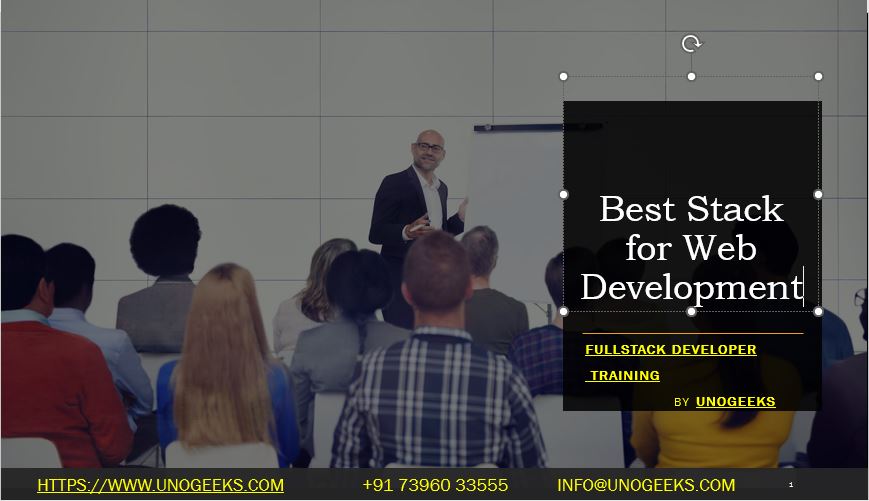Best Stack for Web Development
Best Stack for Web Development
The choice of the best stack for web development depends on various factors, including the specific requirements of your project, your team’s expertise, and your development goals. Here are some popular and versatile web development stacks that are commonly used:
- MERN Stack (MongoDB, Express.js, React, Node.js):
- Front-End: React (JavaScript library for building user interfaces).
- Back-End: Node.js (JavaScript runtime for server-side development) with Express.js (web application framework).
- Database: MongoDB (NoSQL database for flexible data storage).
- Key Features: Highly flexible and efficient for building modern web applications with real-time capabilities.
- MEAN Stack (MongoDB, Express.js, Angular, Node.js):
- Front-End: Angular (JavaScript framework for building dynamic web apps).
- Back-End: Node.js with Express.js.
- Database: MongoDB.
- Key Features: Great for building single-page applications (SPAs) and maintaining a consistent development environment.
- LAMP Stack (Linux, Apache, MySQL, PHP/Perl/Python):
- Front-End: HTML, CSS, JavaScript.
- Back-End: PHP, Perl, or Python.
- Database: MySQL.
- Key Features: A classic stack for web development, especially for PHP-based projects. Reliable and well-established.
- Django Stack (Python, Django):
- Front-End: HTML, CSS, JavaScript.
- Back-End: Python with Django (high-level Python web framework).
- Database: Typically PostgreSQL or MySQL.
- Key Features: Known for its rapid development capabilities and strong security features.
- Ruby on Rails Stack (Ruby, Ruby on Rails):
- Front-End: HTML, CSS, JavaScript.
- Back-End: Ruby with Ruby on Rails (Ruby-based web framework).
- Database: PostgreSQL or MySQL.
- Key Features: Emphasizes convention over configuration and follows the “Don’t Repeat Yourself” (DRY) principle.
- ASP.NET Stack (C#, ASP.NET Core):
- Front-End: HTML, CSS, JavaScript.
- Back-End: C# with ASP.NET Core (cross-platform framework).
- Database: SQL Server.
- Key Features: Suitable for large-scale enterprise applications with a focus on security and scalability.
- Serverless Stack (AWS Lambda, Azure Functions, Google Cloud Functions):
- Front-End: Can be combined with various front-end frameworks.
- Back-End: Serverless functions (e.g., AWS Lambda, Azure Functions, Google Cloud Functions).
- Database: Can use managed databases or serverless databases.
- Key Features: Highly scalable, cost-effective, and suitable for event-driven applications.
- JAMstack (JavaScript, APIs, Markup):
- Front-End: Static site generators (e.g., Gatsby, Next.js) with JavaScript frameworks.
- Back-End: Serverless functions or APIs for dynamic functionality.
- Database: Typically decoupled and managed through APIs.
- Key Features: Ideal for building fast, secure, and scalable web applications.
Full Stack Developer Training Demo Day 1 Video:
Conclusion:
Unogeeks is the No.1 IT Training Institute for Full Stack Developer Training. Anyone Disagree? Please drop in a comment
You can check out our other latest blogs on Full Stack Developer Training here – Full Stack Developer Blogs
Please check out our Best In Class Full Stack Developer Training Details here – Full Stack Developer Training

———————————-
For Training inquiries:
Call/Whatsapp: +91 73960 33555
Mail us at: info@unogeeks.com
Our Website ➜ https://unogeeks.com
Follow us:
Instagram: https://www.instagram.com/unogeeks
Facebook:https://www.facebook.com/UnogeeksSoftwareTrainingInstitute
Twitter: https://twitter.com/unogeeks
